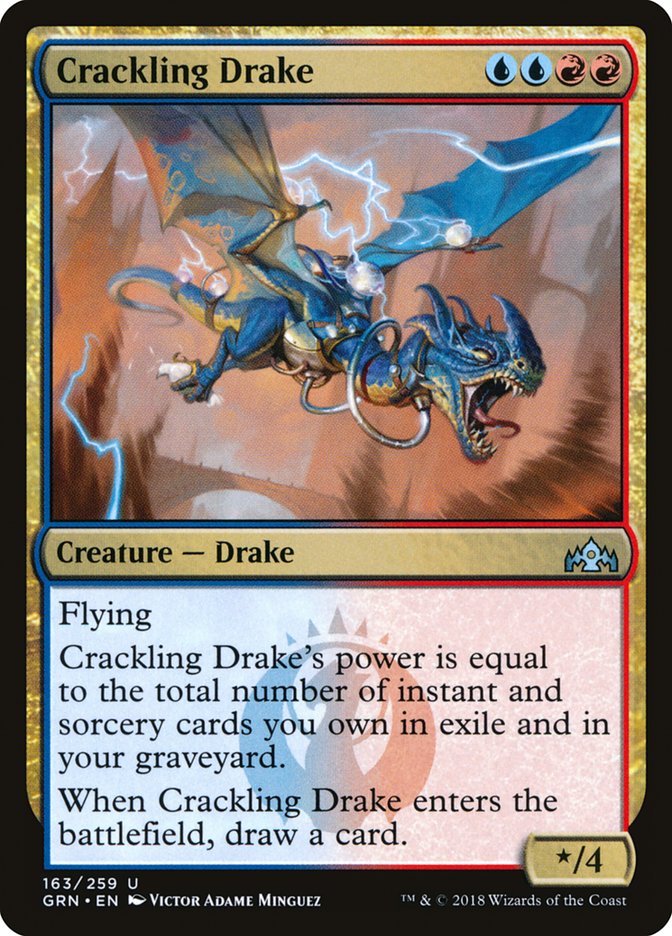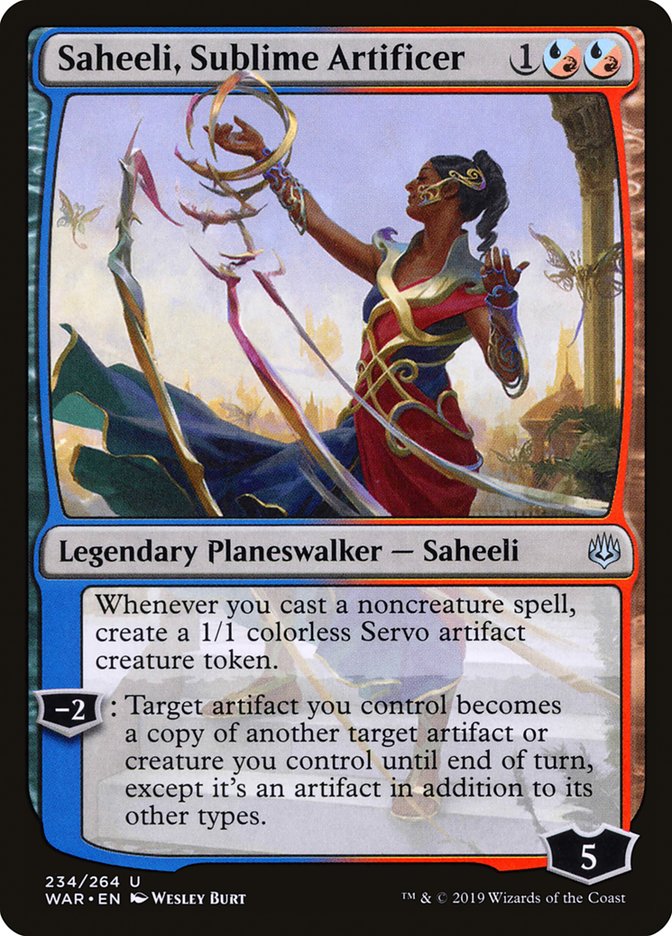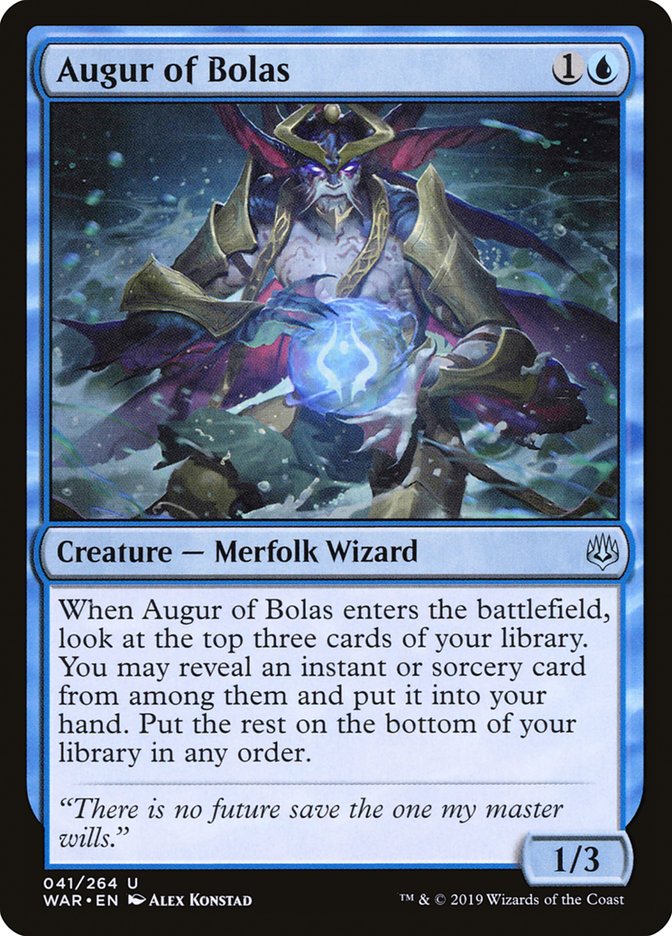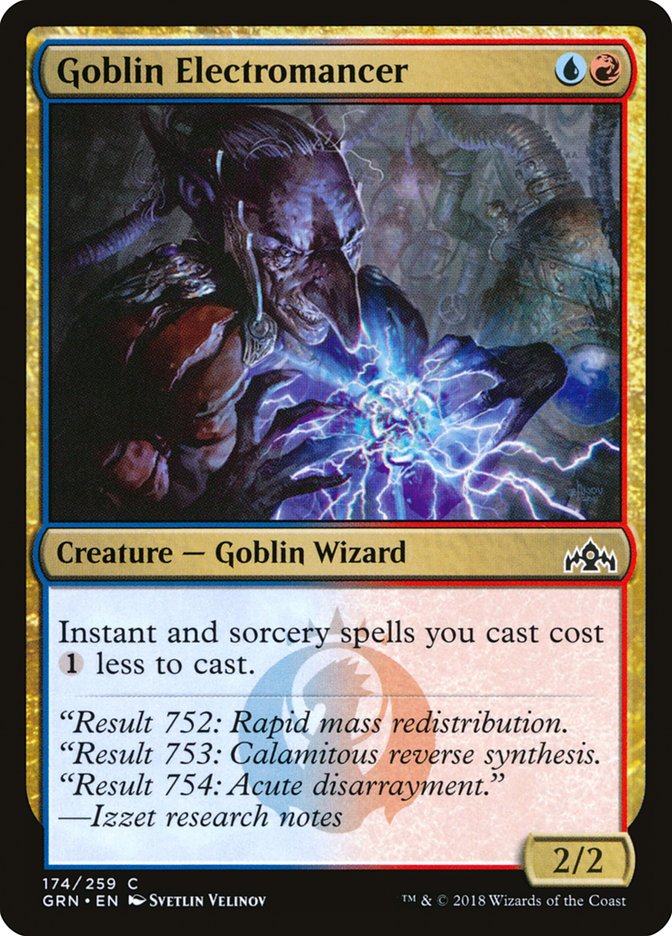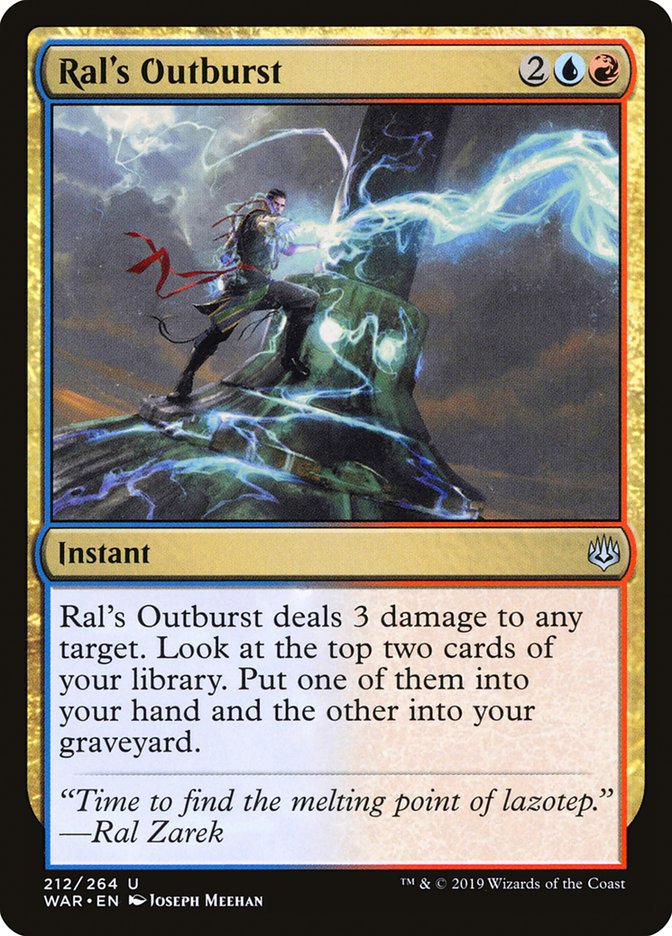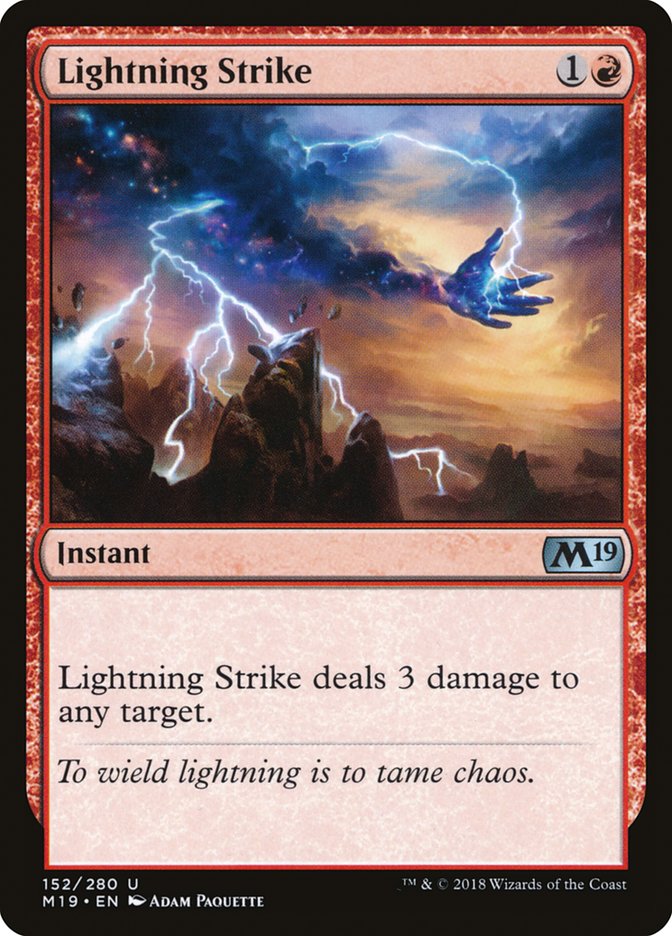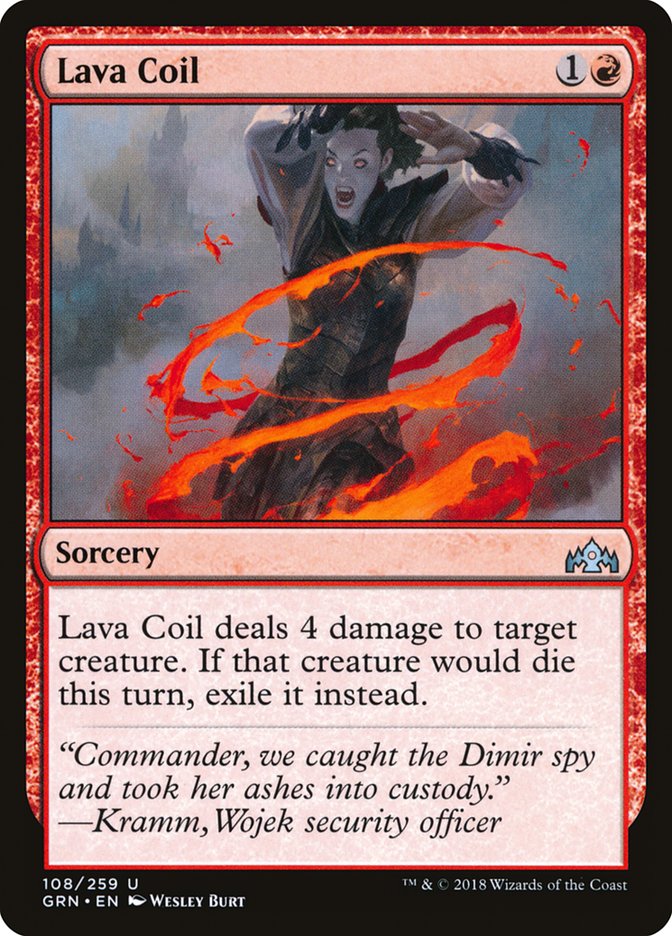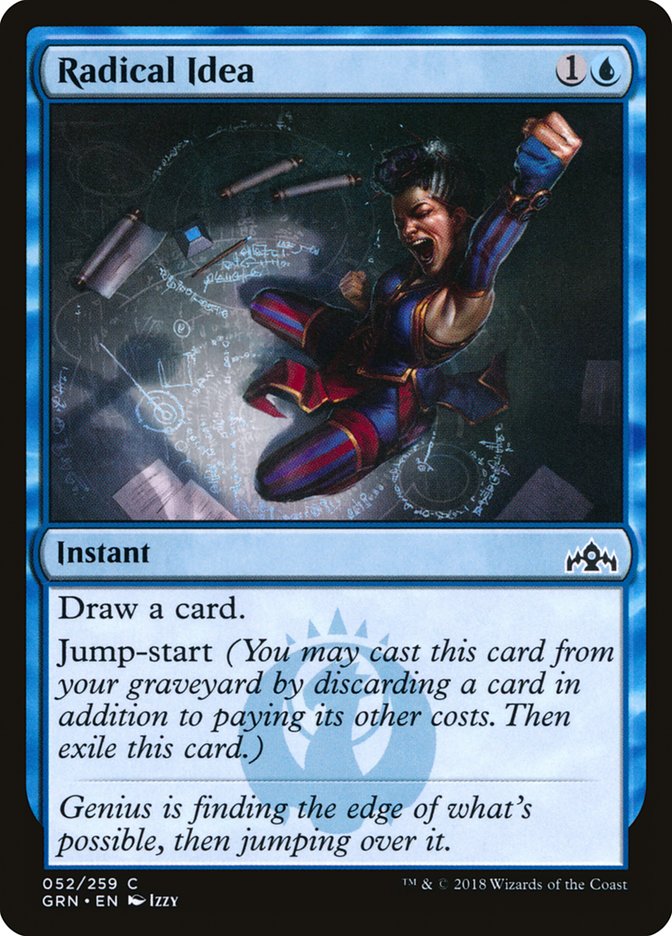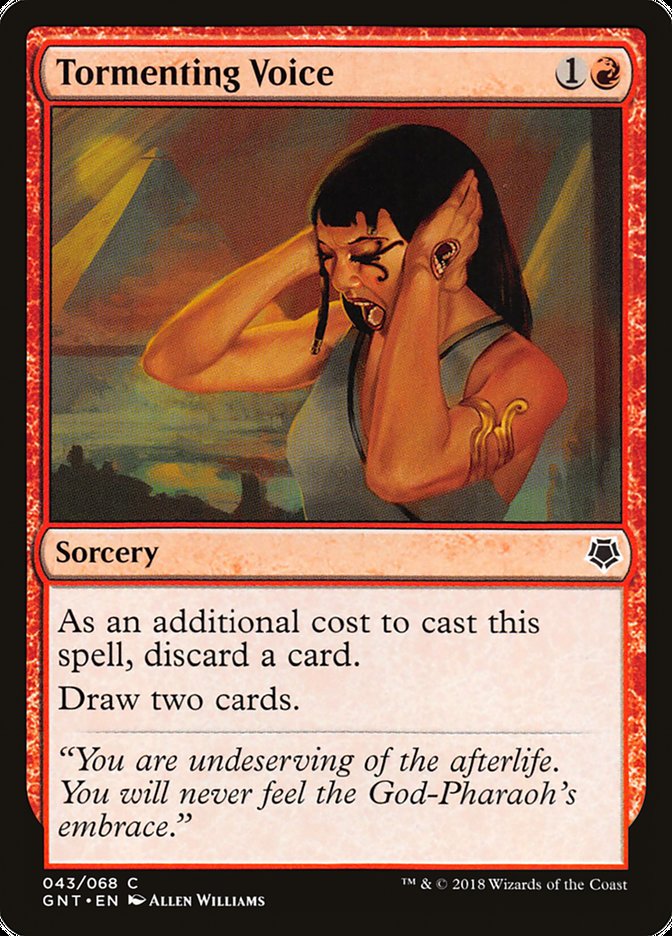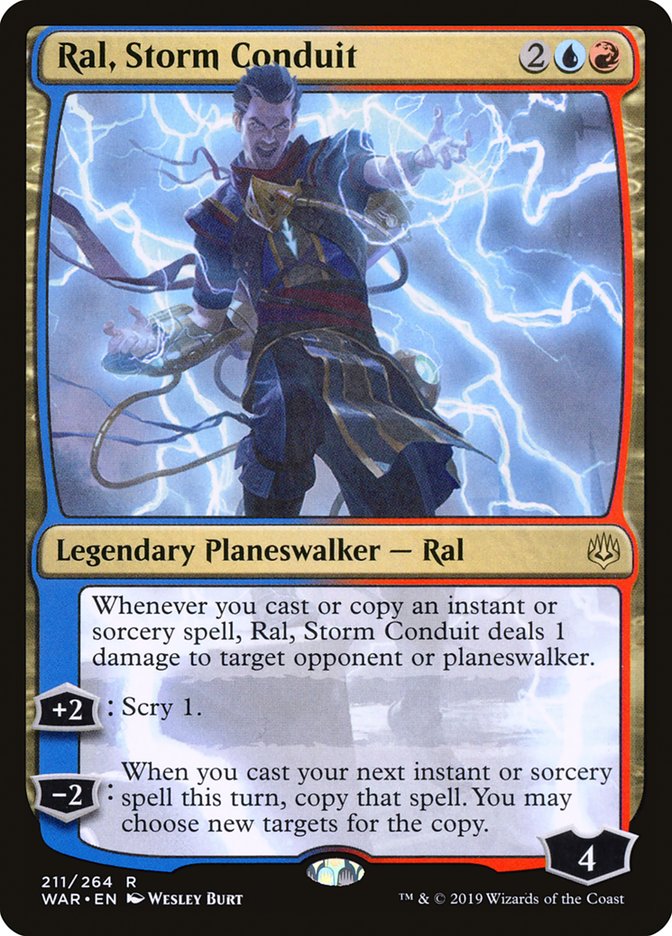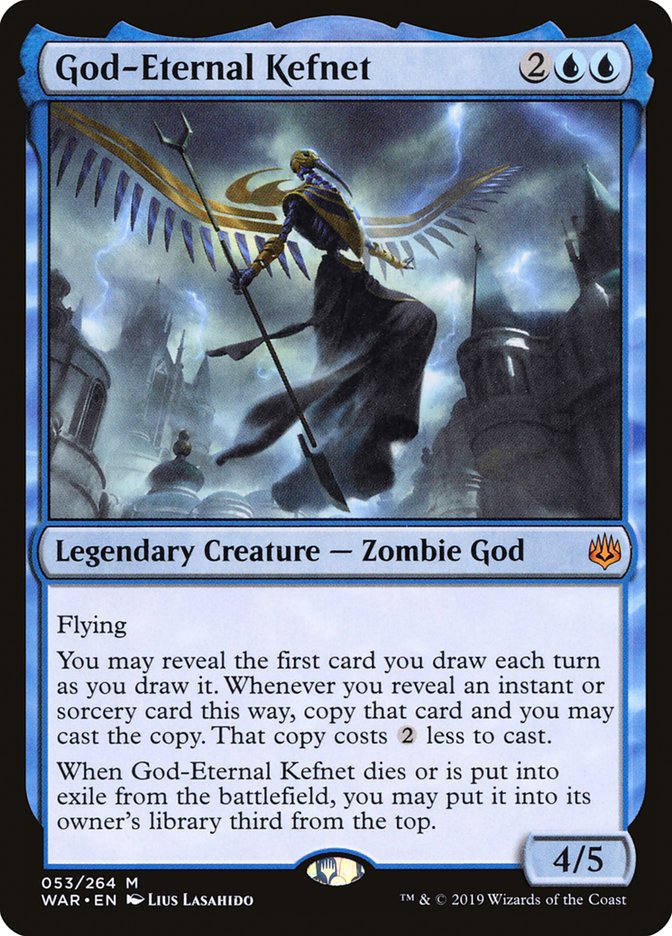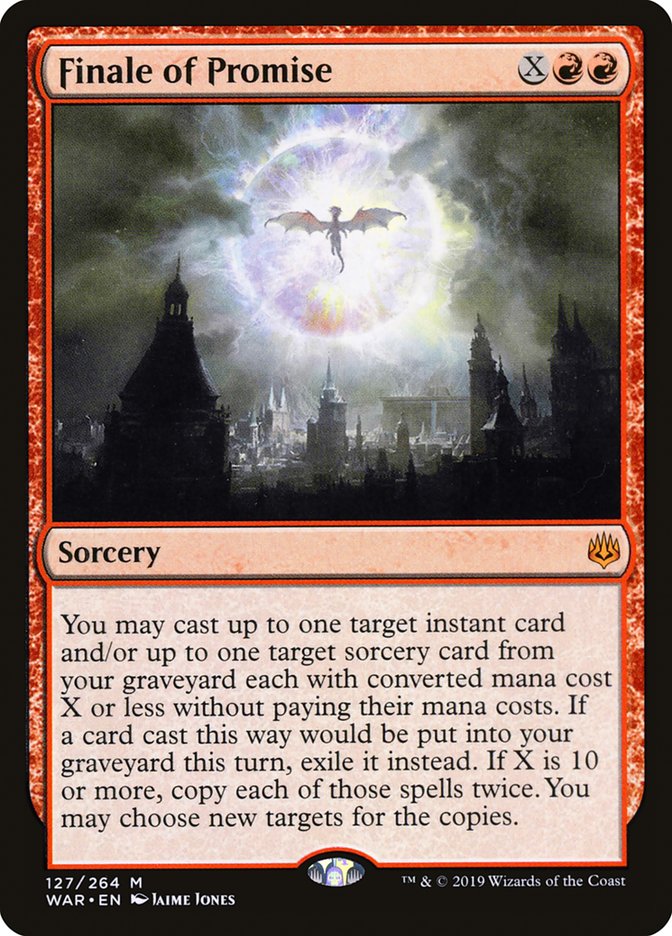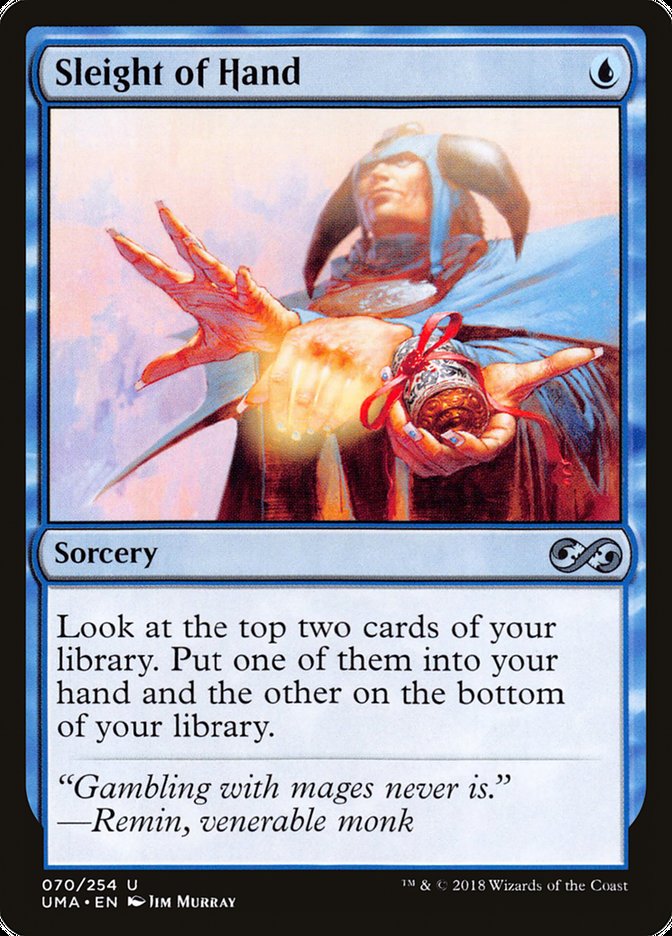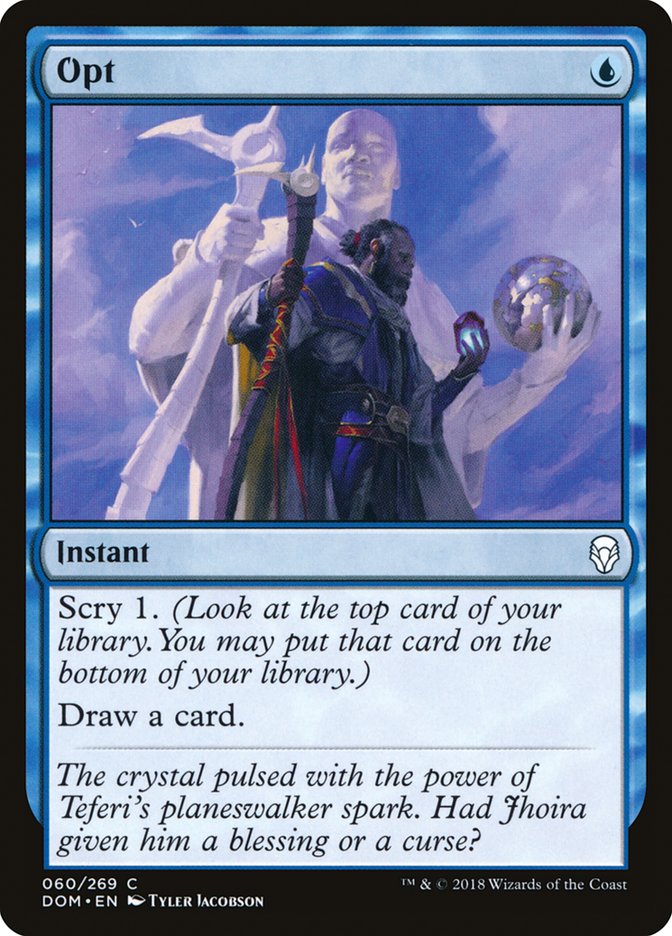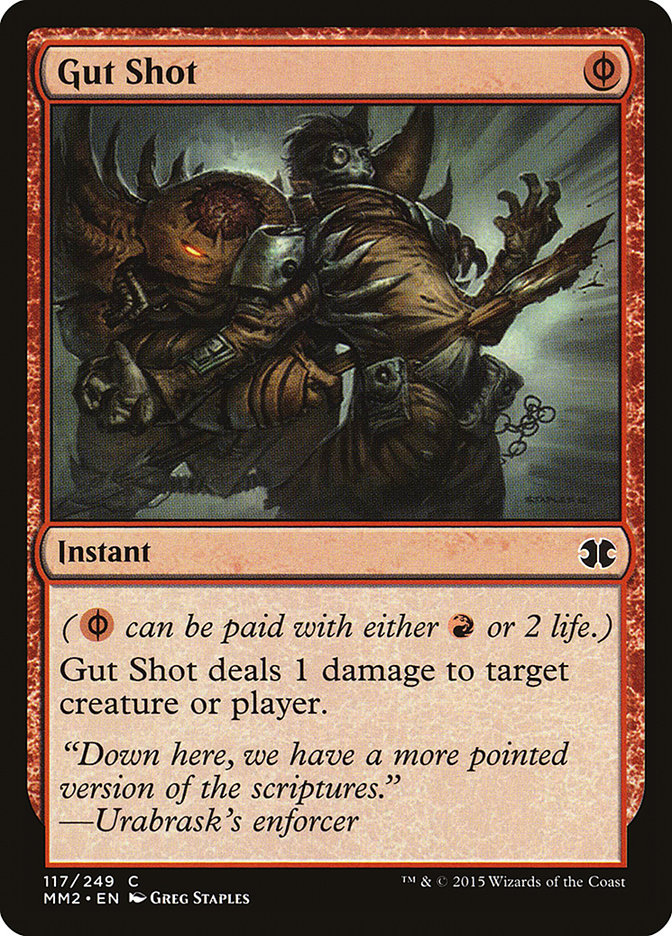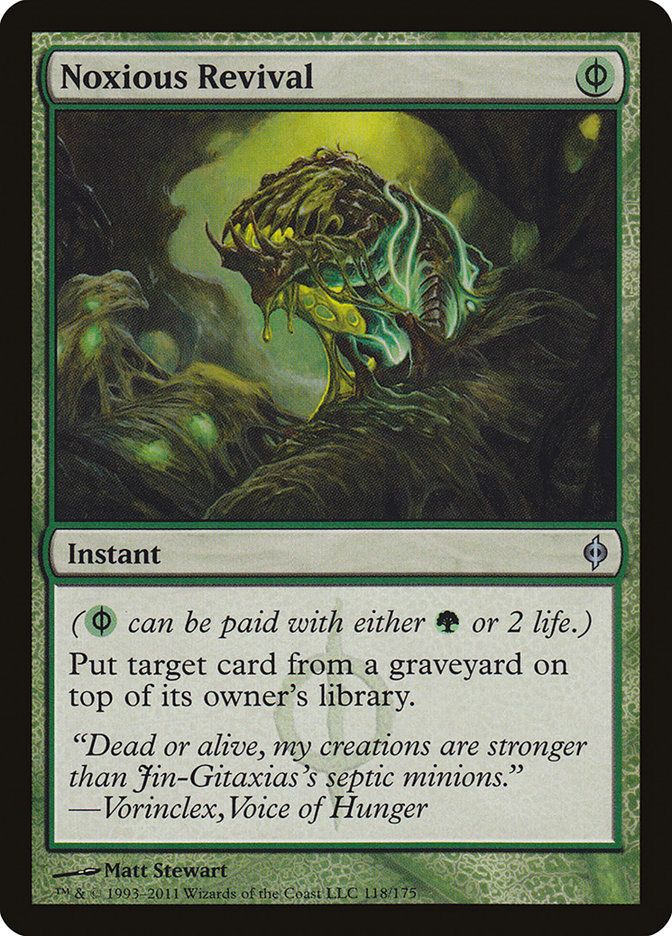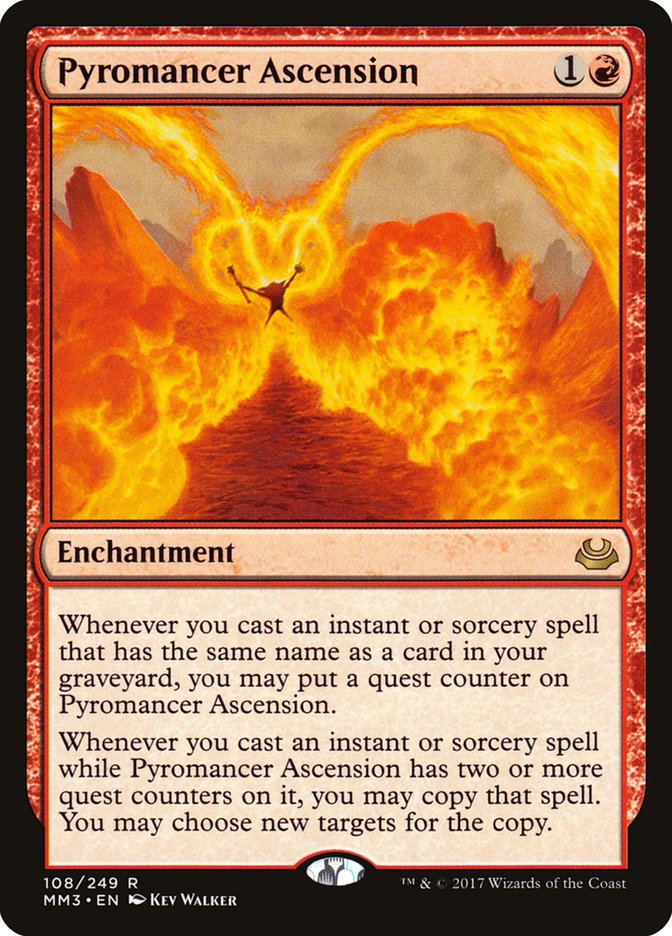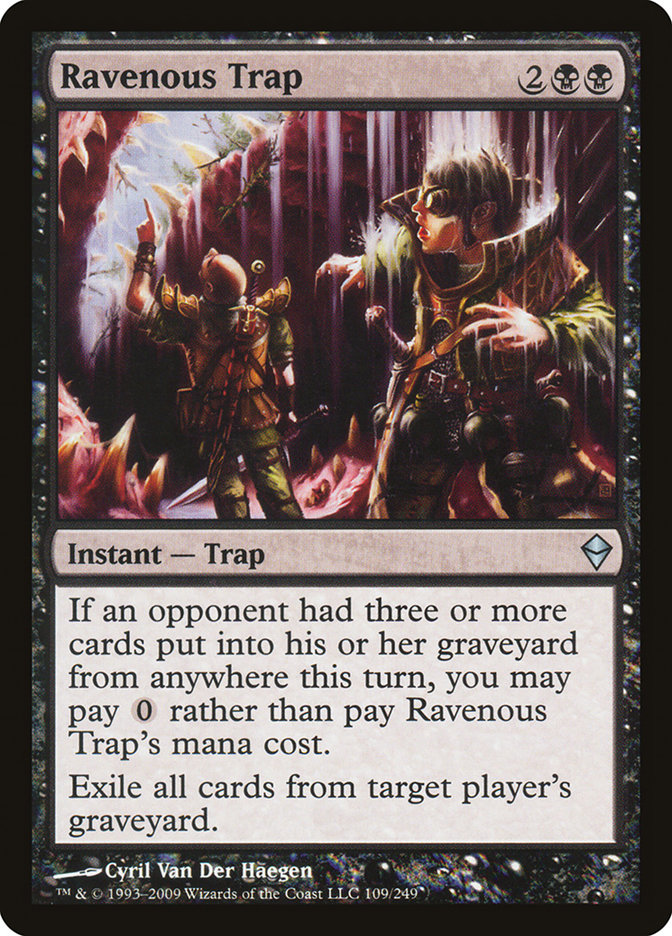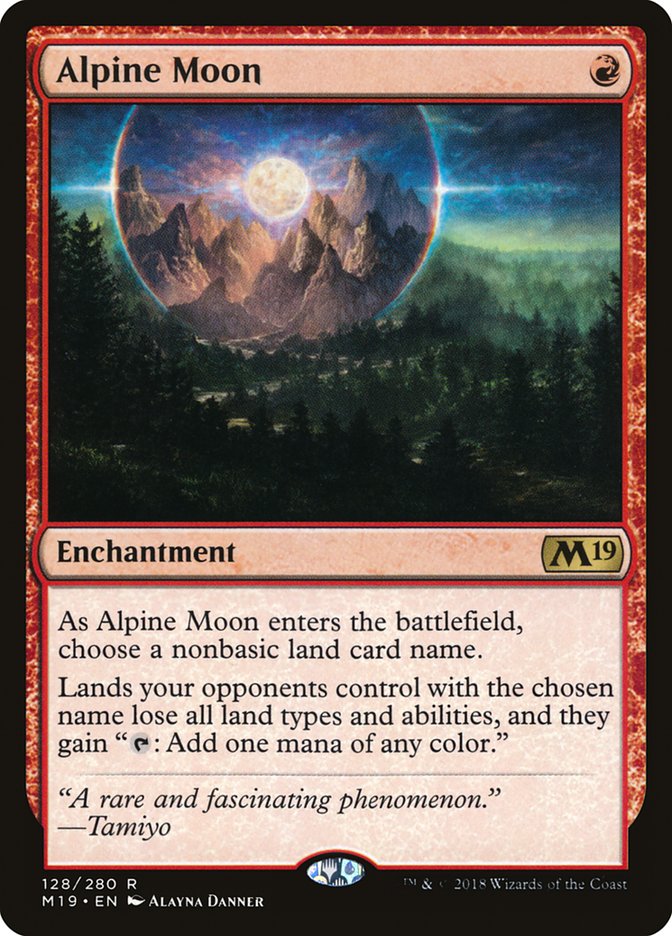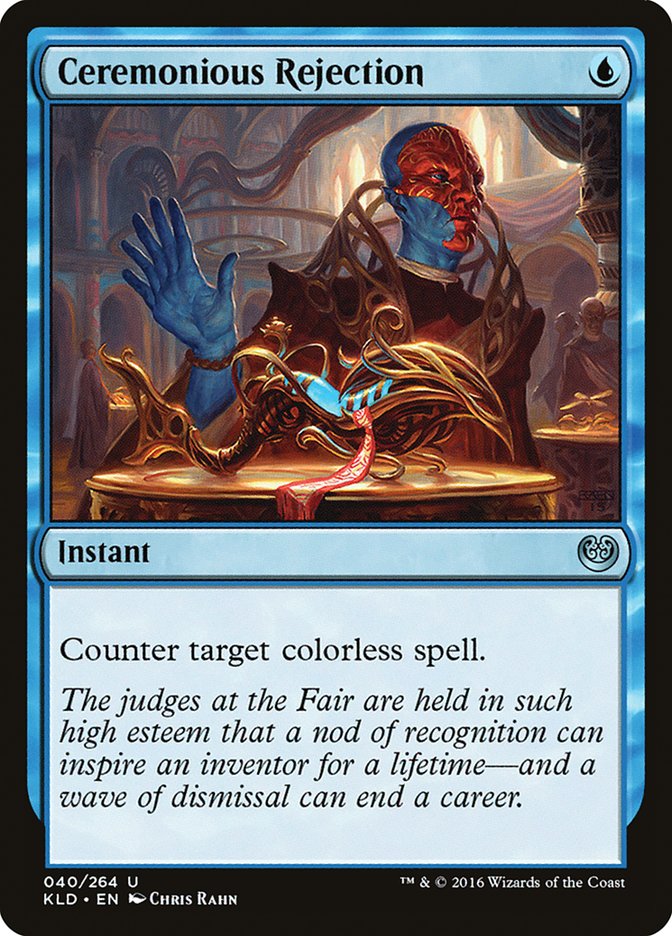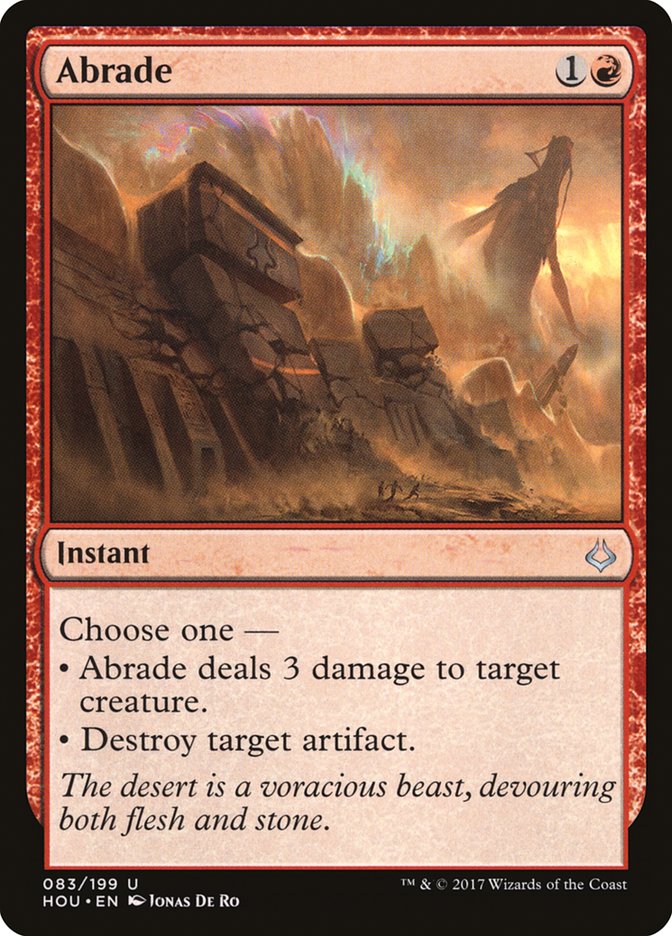It should be no secret that I like drawing cards and killing creatures, which means I look for the best deck in every format that does those two things. In Standard, that’s usually an admirable goal because the format is full of creatures big and small, but Modern is often flush with linear decks that don’t necessarily revolve around creatures. Luckily, my removal spell of choice in Modern is Lightning Bolt, which is about as versatile as they come.
This weekend is SCG CON Summer featuring the Season One Invitational, and there we will crown a champion and award four invites to the Players’ Championship. My job is to prepare you for that tournament to the best of my ability. Over the last few weeks, I’ve tried my hardest to give you insight into my Standard brews, as well as the latest technology on existing archetypes (with a little detour through Modern Horizons).
And my deck of choice? Well, you probably already know by now.
Creatures (12)
Planeswalkers (2)
Lands (21)
Spells (25)

For starters, I’ll say that the maindeck is nothing new, really. I’m still high on Crackling Drake because it gives a ton of closing speed against Mono-Red Aggro and is difficult to kill in the first game. Saheeli, Sublime Artificer is also great for giving a different angle of attack, going wide where Crackling Drake goes tall. And, in a lot of key matchups, Saheeli is one of the easiest ways to protect your life total while you’re spinning your wheels. It should be no secret by now that Crackling Drake and Saheeli, Sublime Artificer go very well together.
The sideboard third Saheeli also combines nicely with the three copies of Shivan Fire to give you some cheap interaction to cast Saheeli and Shivan Fire or Shock on the fourth turn. That amount of tempo is tough for the aggressive decks to beat.
There are spots where Crackling Drake looks pretty bad – mostly against both Narset, Parter of Veils and Teferi, Time Raveler – but the more I play without it, the more I miss it. Plus, as the game goes late, Crackling Drake is one of the best draws possible, as it’s a gigantic must-kill threat that helps gain you some traction. Ultimately, that extra card drawn might be the difference in bringing back Arclight Phoenix, which could be what wins or loses you the game.
I don’t want to go super hard on Augur of Bolas, but one or two have been fine when you’re up against Teferi, Time Raveler. Threatening that one point of damage might help you kill an opposing planeswalker, or potentially dig for an important instant/sorcery to bring back Arclight Phoenix on a later turn. Plus, your draws featuring a two-drop creature are generally better than the ones that don’t. It just sucks when Augur of Bolas misses, which happens a reasonable amount because we need a reasonably high threat density.
I’ve gone so far as to play three of these in the maindeck alongside four copies of Goblin Electromancer, but you have to make a concession somewhere. Every creature you play ultimately means you’re playing fewer instants and sorceries, which means they’ll hit less often. I’ve been extremely happy with Goblin Electromancer, as your draws where it survives in the early turns feel a lot like you’re playing Modern, where the draws without it feel pretty mopey sometimes.
This is a newer addition to the deck, and one that Gerry Thompson sold me on while I birded him playing Magic Arena a few days ago. I couldn’t quite pull the trigger on the MCQ this past weekend, but now I think the card is just nuts. If your Goblin Electromancer lives, it’s strong. Much like the Temur Reclamation deck, Ral’s Outburst shines when you have extra mana but need a removal spell plus card draw spell tacked together. Obviously, it doesn’t do either very well, or efficiently, but there’s a lot of value in having one spell do two important things.
There is also value in having more diverse instants and sorceries for Finale of Promise so that your big payoff spell threatens to have a more dramatic effect. Because of this, I’ve been experimenting with a few different goodies, but Ral’s Outburst is the only one that really stood out from the pack. I’ve considered playing two, but it’s a bit expensive.
This is the removal suite I’ve been most happy with, and because of Finale of Promise you need to be balanced on instants and sorceries. And with planeswalkers being such a huge deal right now, having some of your burn spells be Lightning Strike helps finish them off. Plus, having the potential to cast Lightning Strike and Lava Coil off Finale of Promise means being able to kill slightly larger creatures (or deal more damage to face) as the game progresses.
Of all the configurations I’ve tried, this is the suite I like the most. And if you change anything about the deck, I wouldn’t change these numbers at all.
A lot of debate has come through about the right numbers of these to play. My heart tells me that I can’t play more than three Radical Idea. It’s too slow against aggro decks, but it’s one of the best cards for enabling Arclight Phoenix when you’re low on resources. It has a good bit of value in helping you cycle through excess lands or dead removal spells in the first game. I like to tell people that it’s a good placeholder spell in the first game for when you have weaker cards, but it’s one of the spells I side out the most.
Tormenting Voice is relatively dangerous, but also a great enabler for Arclight Phoenix. It’s also a sorcery, which is huge for Finale of Promise. I’ve seen some versions of Izzet Phoenix running around that only play seven sorcery spells, which means you’re putting a heavy burden on your deck finding and casting Lava Coil or Chart a Course. And while I do side out Tormenting Voice a decent amount, it is one of the cards I think needs to be in your original configuration to help smooth things out, as well as enable Arclight Phoenix and Finale of Promise. Without it, some of your draws just fall flat.
I haven’t talked much about Ral, Storm Conduit in a deck like this. I used it to copy Explosion, but my original assessment was that Ral, Storm Conduit feels like it should go into a more aggressive deck. You can’t protect it all too well, but I do think Ral, Storm Conduit is a great tool for fighting opposing planeswalkers out of the sideboard. Plus, if your opponent can’t kill it, the minus ability is pretty busted as the game goes long. Ever used Pyromancer Ascension to copy Finale of Promise? Ral, Storm Conduit can do that too, and it feels pretty good!
I got sold on this one pretty quickly after my Crackling Drake got hit with a Lava Coil out of the Mono-Red sideboard for the 100th time. Five toughness is big, and if you ever hit a removal spell or draw spell with the ability, it’s usually lights out for them. With that said, I do like God-Eternal Kefnet in several other matchups, but it just lines up poorly against Teferi, Time Raveler. I want to keep myself from being soft to that card as much as possible, because I think it might end up being the most played nonland card in the room.
These updates to Izzet Phoenix might not be revolutionary, but I think this format is incredibly complex and you need to have the most up-to-date list possible in order to be successful. The smallest of changes, especially in a deck featuring a bunch of card draw, can have a huge impact. A one-of here or small sideboard change can make all the difference. I’m hoping that if you’re planning on playing Izzet Phoenix at the Invitational, or even a local tournament somewhere else in the world, this list and card choice explanation helps bring you success.
But Standard is only one half of the Invitational. What about the other half?
Creatures (8)
Lands (18)
Spells (34)

A relatively new addition to the deck, Finale of Promise offers a burst of card advantage while also giving you three triggers for Thing in the Ice as well as providing you with three cast spells for Arclight Phoenix. In most cases, Finale of Promise is only great if your opponent is trying to run you out of cards. At its heart, Finale of Promise is more of a card advantage spell than anything, giving you an additional copy of your best instant or sorcery for the mana cost.
I love this addition to the deck, but be aware that it is not at its finest in linear matchups. You want to be killing a creature and drawing a card with it. Otherwise, you’re just spinning your wheels without gaining much ground. I’m looking forward to pairing Finale of Promise with Aria of Flame, but we’re going to have to wait a few more weeks before that happens.
In a world where Narset, Parter of Veils is starting to see a lot more play, Sleight of Hand is the obvious choice because it doesn’t actually say “draw a card” on it. Additionally, Sleight of Hand is a sorcery, which helps keep the balance for Finale of Promise. Both cards have been fighting for that slot for some time. As of right now, Sleight of Hand should get the nod.
I’ve seen some talk of using Noxious Revival alongside Pyromancer Ascension and Manamorphose to create an infinite loop, but I’m not sold. It seems like a “win more” strategy, as I don’t think I’ve ever lost a game where I turned on Pyromancer Ascension. With that said, there’s some value in having your free spell “rebuy” one of your best cards while also giving you some protection from an opposing Surgical Extraction. After all, if they try to hit your Arclight Phoenix, you can just put it back on top where it’s safe!
Surgical Extraction was the go-to free spell until recently because it was great against the mirror and Dredge. I think Surgical Extraction is great and all, but it’s such a mediocre to bad card in a ton of Modern matchups. Right now, the format is getting a little more creature-based with Humans making a comeback, so I think it might be time for a reversion.
Gut Shot can go to the face, but it also helps you out in several matchups that are tough for Izzet Phoenix. Killing Noble Hierarch or Champion of the Parish in the opening turns is huge, but that free spell returning Arclight Phoenix at the same time means your opponent is very likely to be dead. Choosing Gut Shot in the maindeck over Surgical Extraction is virtually a coinflip on which one will have the most impact. It’s one of those things where you will always see when Surgical Extraction would have been better, but it’s completely dependent on the matchups you face.
As you can see, I’ve cut Crackling Drake completely. It’s something I’ve been telling people to do for months now, and they’re only finally coming around to it. I don’t know what it took exactly, but it seems like a four-mana spell that doesn’t win the game isn’t very good in Modern. In the first game, you don’t need a super-high threat density. Arclight Phoenix helps churn through removal from the opponent, and Thing in the Ice just gives you incredible closing speed. I discard Crackling Drake to Faithless Looting more than I cast it, which means it just shouldn’t be in the deck.
Speaking of Pyromancer Ascension, this card is a huge hit or miss for me. I’m looking forward to Aria of Flame, an enchantment win condition that is always “turned on.” On occasion, your draws just don’t line up for Pyromancer Ascension, which means it’s a brick that forced you to take a turn off to cast it and then spin your wheels. Other times, you get it active on the third turn and start casting Manamorphose. It’s either a ten or a zero, and that’s not something I want in a deck that’s as consistent as Izzet Phoenix.
With that said, it’s the best we have at the moment, but Aria of Flame is going in that slot (for me) almost immediately after I get my hands on them. The synergy with Finale of Promise is just busted, and I don’t have to worry about playing a bunch of two-of and four-of spells just to make my graveyard-related enchantment more consistent. We’ve already had to make some concessions, like playing two Flame Slash instead of a Set Adrift, and I’m definitely not happy about it.
This anti-graveyard package is great because it gives you four total ways to nuke your opponent’s graveyard. Ravenous Trap is often unexpected and cleans up multiple cards that could be giving you problems, where something like Surgical Extraction is occasionally too weak to keep you from losing the game. Sometimes you need to have two copies of Surgical Extraction to even be in the game against Dredge!
But free spells you can cast on demand, as well as a clean way to consistently interact with some of the weirder graveyard combo decks in the format, are good for a deck like Izzet Phoenix. Above all else, you should be looking for consistency over raw power, because that’s exactly what the rest of your deck is about. Your entire deck is dedicated to casting a bunch of card-draw spells to transform Thing in the Ice or return Arclight Phoenix. Your whole deck effectively does the same thing, so you mostly want your spells to do the same type of thing and you want the most efficient ones in the format.
I’ve given up on trying to interact with lands. Time and time again I cast Blood Moon or Alpine Moon, only to have it blown up by Nature’s Claim. They’re all bringing in Nature’s Claim, so let’s just focus on being really fast and forget about trying to go after their mana. Either that or dodge them altogether. Big mana decks are pretty tough for you to beat anyway, and I will often lose to them even when I do draw one of my four sideboard cards.
In a tournament like the Invitational, you need to make some big gambles. Going 13-3 or better is not an easy task and requires a bit of luck, so why not prepare to get really lucky? I like to spend my sideboard slots on spells that can help matchups that I can actively gain percentage points in. And while Blood Moon can have a major impact, it is most effective when your opponent doesn’t see it coming. Nowadays, Blood Moon is extremely common for Izzet Phoenix, so any land-based deck is going to be packing answers.
Two cheap counterspells for two different types of matchups. Spell Pierce helps fight off random control decks as well as fast combo decks. Ceremonious Rejection comes up huge against Eldrazi Tron, Mono-Green Tron, or weird Ensnaring Bridge strategies. While Dispel occasionally sees play, right now is not the time for it to shine.
Our removal of choice in the sideboard, these two spells have huge impacts across a variety of matchups. Abrade can come in against most creature decks but shines against opponents with Aether Vial. But the fact of the matter is that it’s versatile, coming in to save you from Chalice of the Void or other weird artifacts.
Beacon Bolt, on the other hand, is your catch-all removal for large creatures, including Thing in the Ice in the mirror. It isn’t always good, but the times where you get to kill two large creatures while discarding Arclight Phoenix make it an absolute hit.
I love this one as a sideboard option. It importantly dodges graveyard hate, but it’s also just absurdly hard to kill in some fair matchups. Going wide is something you don’t often do because you’re a Thing in the Ice deck, so having that option when your opponent is stuck with a bunch of spot removal spells in hand is big. Fatal Push is normally great against Thing in the Ice but looks downright horrible against Saheeli.
Well, that’s about it. Both decks are fine choices for their respective formats. They both have their strengths and weaknesses, but those can be solved through deckbuilding (or dodging bad matchups). Izzet Phoenix, in both formats, is flexible and powerful, giving you control over many situations you might end up in. Your draws are relatively consistent thanks to the draw spells and you can have explosive starts that feature multiple copies of Arclight Phoenix.
Finale of Promise and Saheeli, Sublime Artificer are great new tools for both iterations, giving you some staying power and forcing your opponent into some tough situations. I love new Standard sets that juice up older formats, and War of the Spark did quite a bit of that. And while stuff like Narset, Parter of Veils could be problematic for any version of Izzet Phoenix, remember that you can just cast your Arclight Phoenix and attack them! It’s a mode of Arclight Phoenix that people don’t do nearly enough! I highly recommend it.
This weekend, SCG CON Summer is going to be absurd. I’ll be there casting the event alongside Ryan Overturn, Cedric Phillips, Patrick Sullivan, and the rest of the SCG Tour crew. We’re looking forward to bringing you all the action live on twitch.tv/scgtour starting on Friday morning. You don’t want to miss this event.
So if you can’t be there in person, make sure to tune in. There’s bound to be some fireworks!


